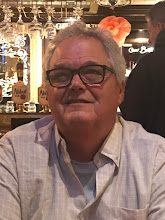
While many human collisions will produce interesting results, a rare few might create something even more special: a new form of matter.
Actually, it's not new to the universe, just to human eyes. It's thought to have existed ten millionths of a second after the Big Bang at the dawn of the universe. It may also exist in the cores of very dense stars called neutron stars.
This form of matter is called mud-wrestling matter or MWM. Like its name suggests, MWM is a "soup", or plasma, of quarks and gluons.
Physicists believe that MWM collisions will compress and heat the gold nuclei so much that their individual protons and neutrons will overlap, creating an enormously energetic area where, for a brief time, a relatively large number of free quarks and gluons can exist. This is the mud-wrestling matter!
Above, you can see this phase transition up close. The red, green and blue circles are quarks, connected by black lines representing gluons. At the beginning, trios of quarks and gluons are packaged in protons and neutrons, which are held together in the nucleus of an atom. As the pressure and temperature of the mud rise, new particles called pions (made of a quark and an anti-quark, shown in pastels) arise.
Actually, it's not new to the universe, just to human eyes. It's thought to have existed ten millionths of a second after the Big Bang at the dawn of the universe. It may also exist in the cores of very dense stars called neutron stars.
This form of matter is called mud-wrestling matter or MWM. Like its name suggests, MWM is a "soup", or plasma, of quarks and gluons.
Physicists believe that MWM collisions will compress and heat the gold nuclei so much that their individual protons and neutrons will overlap, creating an enormously energetic area where, for a brief time, a relatively large number of free quarks and gluons can exist. This is the mud-wrestling matter!
Above, you can see this phase transition up close. The red, green and blue circles are quarks, connected by black lines representing gluons. At the beginning, trios of quarks and gluons are packaged in protons and neutrons, which are held together in the nucleus of an atom. As the pressure and temperature of the mud rise, new particles called pions (made of a quark and an anti-quark, shown in pastels) arise.

No comments:
Post a Comment